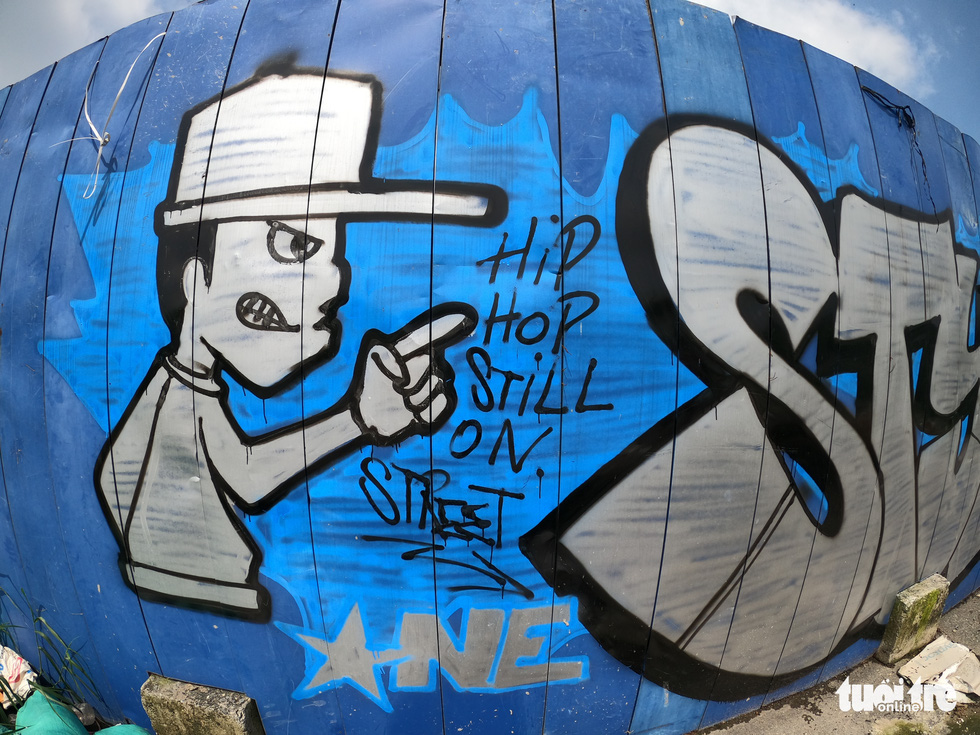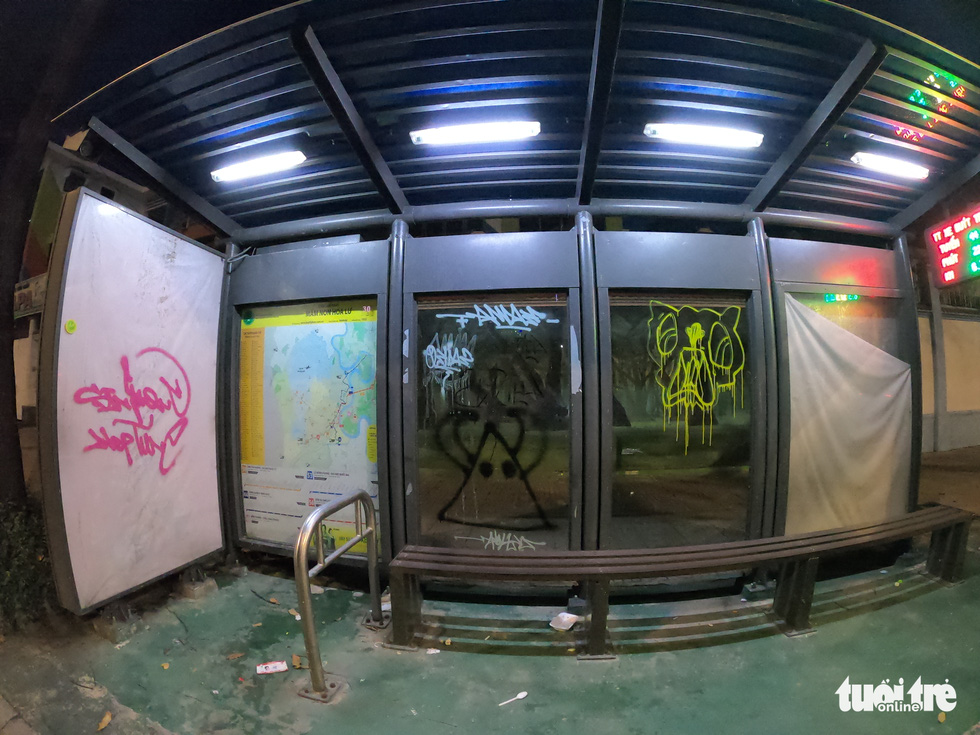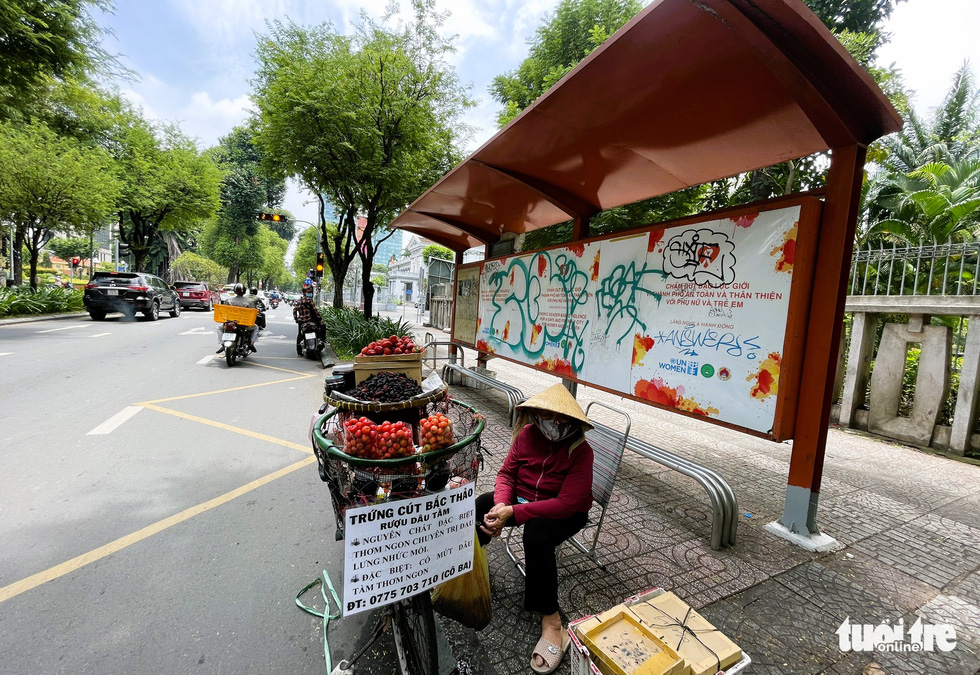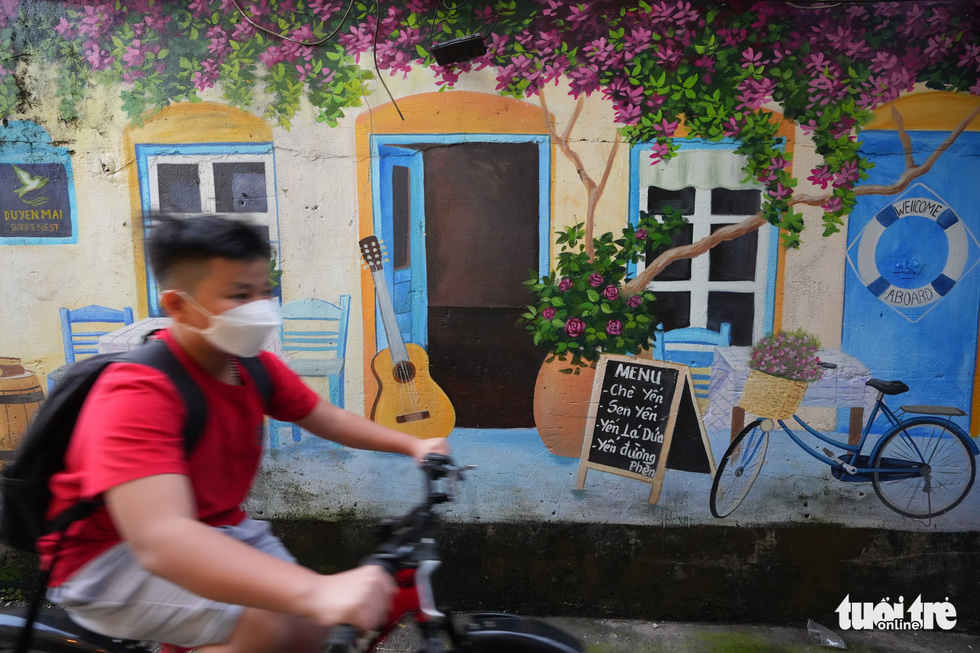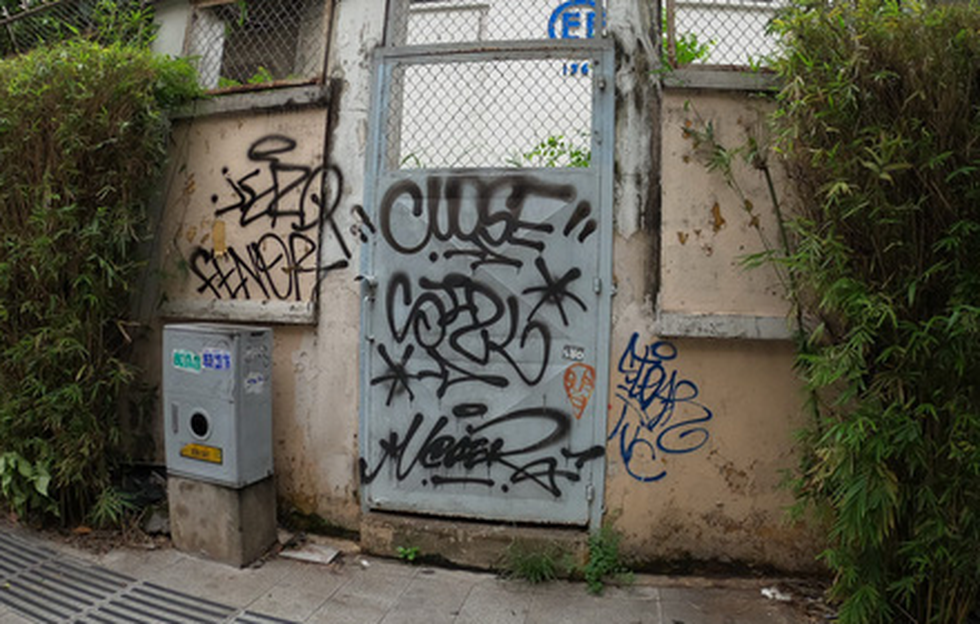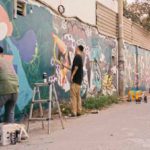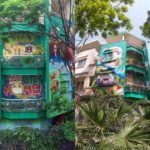Several experts in the field have recommended a number of strategies to effectively combat the illegal activity.
At this time, we are in need of a playing field that can truly be called as such.
According to Nguyen Quang Huy, an urban art expert from the University of Social Sciences and Humanities under the Vietnam National University-Ho Chi Minh City, the presence of graffiti on public structures in Ho Chi Minh City is not suitable for the urban environment.
Urban sculptures can sometimes detract from the beauty of city environments instead of enhancing them with their artistic value.
According to Huy, while sanctions for violators are crucial, it is even more important to focus on raising people’s awareness.
When paintings are meticulously planned and executed on walls, it guarantees aesthetic appeal, ultimately gaining the approval and admiration of the community.
|
|
| A distasteful painting on Luong Dinh Cua Street in Thu Duc City under Ho Chi Minh City. Photo: Hoang Loc / Tuoi Tre |
“A dedicated space for painting enthusiasts should be established, where experienced artists can collaborate and determine suitable locations for their artwork. By doing so, we can ensure that young artists will respect and appreciate urban structures.” – Huy
It is essential to consider the inclusion of a designated graffiti art space in long-term cultural infrastructure development strategies.
The topic I would like to discuss is the fine line between art and vandalism.
Meanwhile, Associate Professor Dr. Nguyen Duc Loc, director of the Social Life Research Institute in Ho Chi Minh City, expressed concern about the potential vandalization of urban beauty and economy by those who do not fully comprehend the significance of graffiti art.
The misinterpretation of this concept blurs the distinction between genuine artistic expression and destructive vandalism.
There remains an ongoing unresolved conflict between state agencies and young individuals regarding the punishment of graffiti. Effective and practical solutions have yet to be devised.
The challenges faced by young individuals often serve as a source of motivation and inspiration.
Promoting Positive Graffiti
Instead of focusing on punitive measures for graffiti artists, society should consider strategies to encourage and foster positive graffiti.
It is essential to educate the youth on the origins of graffiti, in order to foster a deeper understanding of this unique form of street art. Instead of viewing graffiti as a catalyst for conflict, it should be recognized as a legitimate art form, as articulated by Loc.
Society’s Perspective on Youth Hobbies
In order to create a healthier and more inclusive society, it is crucial to develop a more objective view towards the hobbies of the youth. Rather than being excessively strict, it is important to guide young people towards engaging in activities like graffiti in a responsible and productive manner.
|
|
| A bus stop on Nguyen Huu Canh Street in District 1, Ho Chi Minh City is tainted with paint. Photo: Hoang Loc / Tuoi Tre |
“We should create spaces for young people to showcase their abilities,” said Loc.
Graffiti artists often work discreetly and swiftly, often under the cover of darkness, to evade detection.
It is crucial that a delicate balance is struck between promoting positive values of street art and implementing appropriate education solutions and punishments.
Those who engage in acts of vandalism must be held accountable and face appropriate consequences.
It is said that ‘Rome wasn’t built in a day’.
According to Nguyen Tran Phuoc, a representative from the Vietnam Psychotherapy Association, the act of painting on public buildings cannot be deemed as a genuine passion. True passions are characterized by adherence to rules and a purposeful effort to benefit society.
Engaging in activities solely for personal gain or to boast about oneself is not permitted.
Regarding the rationale behind their actions, Phuoc explained that individuals may encounter disruptions in their lives, particularly in relation to their mental well-being.
Many individuals may aspire to become artists, but often encounter various obstacles that hinder their pursuit of this dream. On the other hand, some individuals simply strive to showcase their artistic talents to the public.
The individuals engage in misconduct in order to seek acknowledgment from others for their skills.
Instead of relying solely on punishment as a short-term fix, it is essential for society to come together and provide care for individuals in need. By connecting them with trained psychologists, we can work towards a more long-term and sustainable solution.
According to him, it is important to initially conduct research on their meeting locations and motivation behind their actions. Additionally, organizing painting competitions would be beneficial for them.
Optimal Solutions for Community Awareness
Only solutions that involve the entire community are considered optimal when it comes to raising awareness. We believe that awareness campaigns should engage everyone and encourage active participation.
By working together, we can create a lasting impact and bring about positive change. Our team is dedicated to developing solutions that bring awareness to important issues and help communities thrive.
Join us in our mission to make a difference and create a better future for all.
Stand against wrongdoing
Engaging in the act of creating graffiti in public locations should not be perceived merely as a negative pastime. Rather, it necessitates being acknowledged as a criminal activity that demands complete elimination.
|
|
| A bus stop on Ly Tu Trong Street in District 1, Ho Chi Minh City is full of irrelevant writings. Bus stops are favorite destinations for drawers of graffiti. Photo: Le Phan / Tuoi Tre |
The individuals engaged in defacing the city with their street art paintings will not be tolerated.
It is a cause for concern when individuals share photos of their products on social networks, as this poses a significant risk of rapid dissemination. Despite the potential for unwanted attention, many are willing to sacrifice sleep to engage in graffiti artistry.
In the realm of artistic creation, the artists often draw inspiration from each other, collaborating in groups rather than working in solace. Their shared creativity and mutual support fuel their artistic endeavors. Together, they engage in a rapid painting process, dedicating no more than three minutes to each masterpiece. This efficient approach enables them to produce multiple stunning paintings in a single night.
The effectiveness of patrol teams in catching vandals is commendable, however, the number of individuals facing sanctions is relatively low and the existing sanctions lack sufficient stringency.
Education and awareness campaigns may not effectively reach individuals who are purposefully engaging in violations.
Implementing effective and efficient strategies for promptly detecting and strictly handling individuals engaging in illicit activities will be paramount in eradicating such unlawful behavior.
It is now readily apparent to assess the extent of damage due to the abundance of surveillance cameras in place and the accounts of local residents.
It is imperative that legal action be pursued against offenders, and their personal information be made accessible to the public.
It is imperative for internet users to come together and unite in a coordinated effort to oppose and discourage individuals engaging in illegal activities on social media platforms. By collectively boycotting such wrongdoers, their presence and influence will be significantly diminished, making it increasingly challenging for them to thrive without any backing or support.
The restoration of tainted structures can be a costly endeavor. The process requires meticulous attention to detail and skilled professionals to ensure that the structure is properly cleaned and restored. This can involve removing contaminants, repairing damage, and implementing preventative measures to prevent future contamination. It is important to address tainted structures promptly to avoid further deterioration and potential health risks. No matter the size or complexity of the project, hiring a reputable restoration company is essential to ensure the job is done properly and to industry standards.
According to Nguyen Viet Quang, the head of Infrastructure Management Division No. 2 at the Road Traffic Infrastructure Management Center of Ho Chi Minh City, numerous structures in the city have been marked with graffiti and require funding to be restored to their original condition.
|
|
| Beautiful drawings on walls should be promoted to deal with pointless graffiti. Photo: Huu Hanh / Tuoi Tre |
According to him, artists can deface public facilities in just five to 10 minutes, but it takes state agencies several days to handle the aftermath. For instance, the paint used by vandals on the Thu Thiem 2 Bridge required the use of 14 different solvents, yet the bridge cannot be fully restored to its original condition.
Recently, there has been an issue with the paint on the Thu Thiem 2 Bridge, where some 20 spots had initially been removed. Unfortunately, it appears that many of these spots have been smudged once again.
This act of vandalism is a challenge to management agencies and requires strict sanctions.
In the city, numerous bridges are plagued by graffiti, requiring the repainting of those adorned with countless artworks.
“We have considered the option of using stain-resistant paint. However, this solution proves to be expensive, as each square meter of structures requires VND300,000 (US$12.8),” explained Quang.
We have sought assistance from the People’s Committees and police of Thu Duc City and District 1 to ensure the safety and aesthetic appeal of the Thu Thiem 2 Bridge.
In accordance with current regulations, painting on public construction works is prohibited.
|
|
| The gate of an agency on Hai Ba Trung Street in District 1, Ho Chi Minh City is covered with graffiti. Photo: H.L. / Tuoi Tre |
Like us on Facebook or follow us on Twitter to stay updated with the latest news about Vietnam!
Hanoi plans to open another pedestrian street
Hanoi’s authorities plan to open another pedestrian street around Thien Quang Lake in Hai Ba Trung District.

